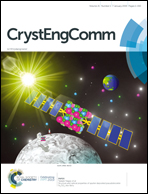High pressure: a complementary tool for probing solid-state processes
Abstract
Since the early days of X-ray diffraction, researchers have tried to follow the evolution of crystal structures under extremes of pressure. Recently, interest in this area has exploded, attracting scientists from backgrounds across the physical and life sciences. Much of this rapid expansion has been due to the enhancement of diffraction equipment, including detectors, goniometers, and high-pressure cells, and the development of synchrotron radiation and neutron sources. The high-pressure research generally focuses on the direct effects of pressure on the structural evolution of a system. The present contribution describes examples of a less common application: hydrostatic compression of crystals of organic and coordination compounds can be used as a complementary tool in order to rationalise the mechanisms of the transformations in these solids that take place at atmospheric pressure. The data on the compressibility, equations of state, phase changes, or the effects of pressure on intermolecular distances, molecular conformations and chemical bonds can shed light on the factors that are important for thermal and photochemical reactions in the same crystals without an external load as well as on their solid-state or solvent-assisted polymorphic transformations. The manuscript also discusses how structural studies under extreme conditions can help to rationalise the thermo- and photosalient effects that accompany some solid-state transformations. This knowledge is currently of great importance for materials science since mechanically responsive materials have the potential to be used for the design and manufacture of new supramolecular devices.

- This article is part of the themed collections: A celebration of 25 volumes of CrystEngComm, 2019 Highlight article collection and CrystEngComm New Talent


 Please wait while we load your content...
Please wait while we load your content...